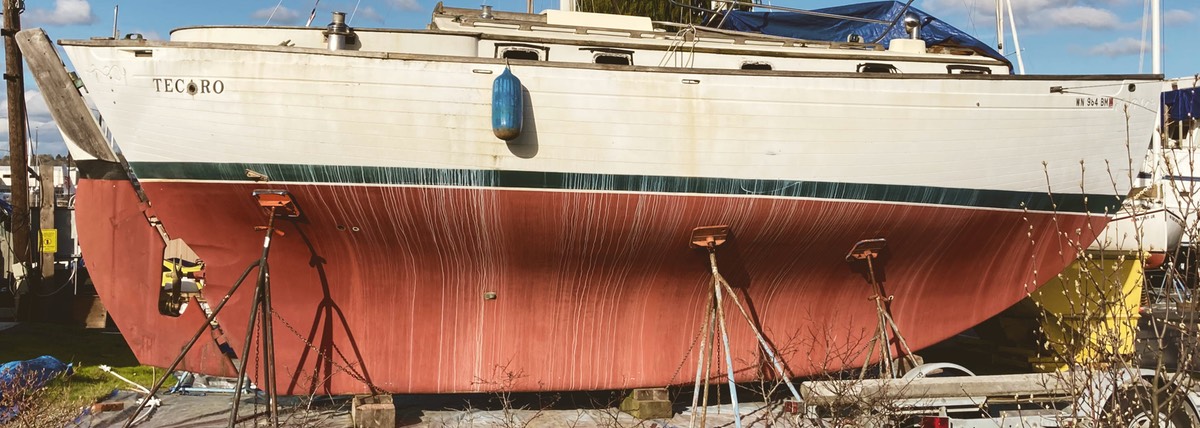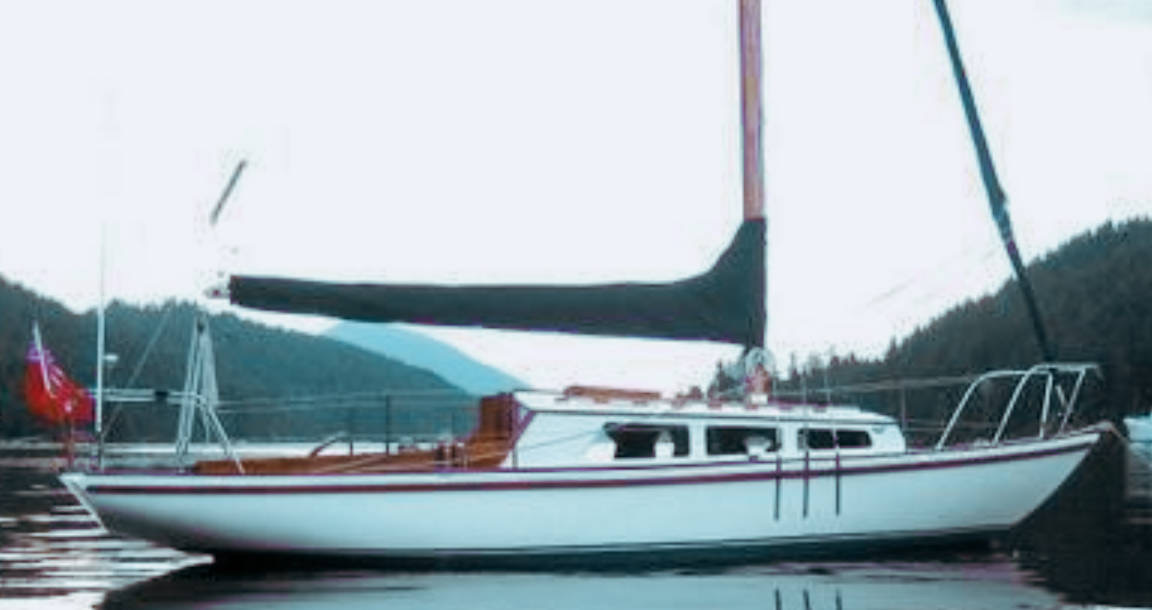This is the fine work tent designed and built by my ex-boyfriend the builder David Schingeck, who is mercifully off hiking with his wonderful new life, and we wish that landlubber the best. He taught me a lot about how to approach a building project that is not a theatre set, and for that reason, I have a better go of it this time.
A significant part of my quandary about the boat is a sense of general uniformity in style of boat interiors in the face of chaos in the style of the exteriors.
This is because the second half of the 20th century, when most of these almost-free boats originated, was a time of experimentation with a cheap-ish new hull material of fiberglass in a seller’s market. You’d have to be a numbskull not to turn a profit building fiberglass sailboats. Heck, people build lake boats all the time in the back yard for a few grand.
Let’s take a look at some of these hulls.

This is a full keel, which denotes the early days when they were building them like the copper-over-wood coming out of the 19th century. This is basically a tank. The old upscale full hull line of Westsail garnered the nickname “Wet Snail” because it was very slow. The substantiality does denote blue ocean capacity. https://en.wikipedia.org/wiki/Copper_sheathing

Mine is a modified full keel and probably built earlier. I understand the design keeps it from splashing water up the back, so so the sailors can keep fairly dry. One of my sister ships made it all the way to Asia, and I got a lousy t-shirt!

Whereas this is just a fin, like a fish, allowing for greater maneuverability. And this is just the older boats sitting around the yard. The one above looks to be for sale by South Park Marina. I don’t know. Call the marina and see. It is a cute boat. I would snap it up like I would a lot of these if I were crazy.
No doubt the sail plan is different for every type of vector configuration as well, making alterations in fundamental components not an exact science, and part of the reason I am hanking on the jib instead of furling it, and may someday look to install an electric motor for that all-important placement of the prop and the torque of the engine. I am sure the Peanut Gallery will laugh at the idea that the project will ever get finished, but what we have here is a woman-owned enterprise in an actual boat yard, and that speaks of more commitment than a ship in the yard at home with a flapping tarp. Or none.

The above is a sister to mine, though in mint condition and for much more money. That is how my mast actually is, as well as the boom. It is a giant sail area, though I don’t have a roller furler setup, just a hanked-on jib. The truth is, I intend to keep the jib hanked on, because the roller furling setup changes the shape of the jib, and I have heard the scuttlebutt about what happens when you downsize the mast, the jib, and the engine on this ole girl. You end up caling the Coast Guard.
Whenever I get mad at my boat, I look at this. Who cares about the internal finishes when you have a Fiesta Boat to bring in?
And that is only the monohulls. I wish I had access to some of the more stylin’ catamarans and trimarans, though not in the Pacific Northwest where it is cold and rather unpleasant and the Pacific is where you have to be, not the Caribbean.
So I suspect that the mandate of a universal white interior with fake teak veneers is a means of demanding order amidst changing styles of everything else.
So the point of my quandary is mostly about giving myself permission to overspend over a long period of time in the classic way of the near homeless but ever-defiant.
Now, on to Friothusibu . . . It’s been a while since I reported on the boat, though not since I have dealt with her, principally by hanging out.
Long hours at physically demanding work have necessitated a policy of planned inertia interspersed by time at local bars, and, yes, I do wear a helmet on site.
The one cubby is still sanded but not yet painted, while the cubby next to it is half sanded. No one is feeling reproachful about this in light of all of the sleek and successful cubbies with their complement of groceries that depend on hot water for the cooking situation and turn mostly into oatmeal and tea, with the occasional box of wine, but the cubby remains there being stared at hard occasionally by its owner.
Then there is the bilge, which had a bit of water in it the last time I checked that needed to be looked at again. It was looked at again and determined that the water is not very much and maybe not worth mucking up the wet dry vacuum. I don’t know. It was used for that last time by the expert and perhaps should be again. Or maybe not.
What I really want is a hand pump and not a bunch of bilge water in the middle of my sanding project. So that is on the list.
I got some new foam to make a second layer of mattressing for the v-berth since the four inches that is there is not keeping my back in good shape. At $19, it was cheaper than a chiropractor. The heated upholstery knives are $800, so it looks like we will be using the scissors again, since I don’t want to be inhaling foam from the cheap upholstery knife. There is a reason v-berth cushions cost a thousand bucks, and this is part of it.
I am looking to get the exterior deck work done this season, and possibly the mast, though when I am operating on more than four hours of sleep a night.
